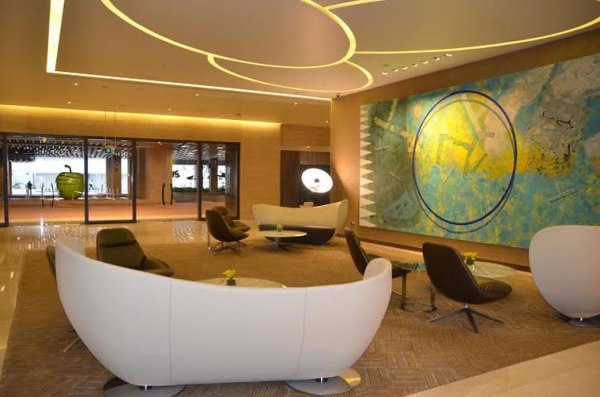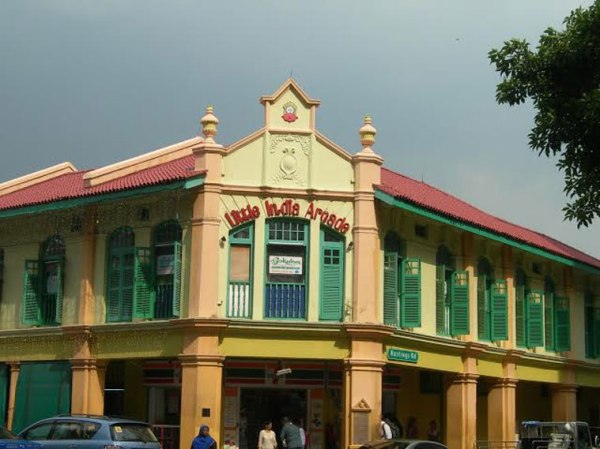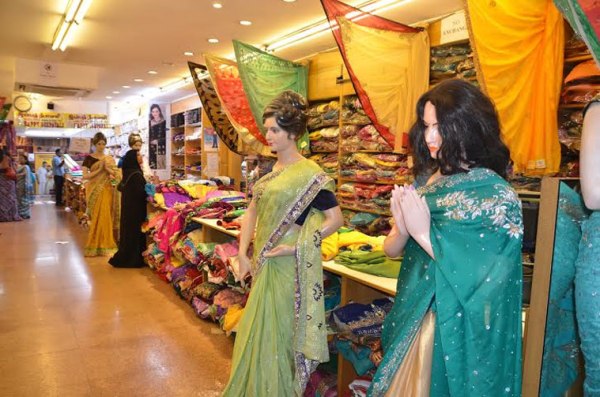Exploring the Little India in Singapore
People on the streets are largely like me, many attired in their traditional costumes such as saris and dhotis.
 Inside Hindu temple (Source: Sandip Hor)
Inside Hindu temple (Source: Sandip Hor)
It’s a normal weekday afternoon in Singapore. I am on my way from the airport to the hotel. As we pass through the mega city’s avant-garde precincts and manoeuvre into Serangoon Road, it appear like stepping into another world where imaginably time has stopped. The buildings flanking the thoroughfare, the merchandise on display in the shops, the people crowding the quarter, the billboards and posters greeting eyes and the entire atmosphere doesn’t match up with rest of Singapore, but surely present a vibrant character.
“We are in Little India Sir, here you will possibly get to drink Mango Lassi instead of Singapore Sling”, tells Lee my taxi driver excitedly while dropping me at the foyer of the newly opened One Farrer Hotel and Spa.
 One Farrer Hotel and Spa (Source: Sandip Hor)
One Farrer Hotel and Spa (Source: Sandip Hor)
There are few other sleeping nests in the locale, but this urban resort has been designed for the discerning travellers by amalgamating innovative hospitality offerings with technology enabled contemporary chic accommodation styles. “We are ready to welcome patrons from India to make them feel at home away from home” says an executive management staff from the hotel.
The “home away from home” feeling is unmistakable, the moment I storm outside. People on the streets are largely like me, many attired in their traditional costumes such as saris and dhotis. The air is filled with aroma of curries and blended with the fragrance of flowers and burning incense sticks. All around is an acoustic fusion of loud Bollywood music and multi linguistic conversation, at times interrupted by the ringing of temple bells and calls to prayers from the mosques. Colour and flashes from adjoining sari and jewellery stores draws the passer-byes. Spotting many Indian institutions like State Bank of India and Bank of India and restaurants like Komala Vilas and Woodlands adds to the homely sentiment.
 Typical Little India building facade (Source: Sandip Hor)
Typical Little India building facade (Source: Sandip Hor)
 Inside a sari house (Source: Sandip Hor)
Inside a sari house (Source: Sandip Hor)
The tempting smell of frying samosas lures me inside a noisy street side café where I meet a couple from England, on their way to India. “If this is Little India, we are excited to see the big one”, they comment while managing hot samosas with sweet tea.
“Gora-people visit here to get a feel of Indian culture while local Singaporeans drop in to buy spices and eat hot food”, says Akram the café manager. A third generation migrant, he has been living in this area since birth and knows well its history which dates back almost two centuries. “It was developed by the colonial regime in the early 19th century as a settlement ground of Indian convicts. Abundant water and grassland soon made the domain attractive for crop growing and cattle farming. Over the years, through natural process of evolution it emerged as the hub of Indian culture and life in Singapore.”
The appeal of Little India that stretches couple of kilometres on both sides of Searngoon Road, looms in its enduring old charm and the best way to sample is by wandering along the main road, its side alleys and by lanes.
The two story shop houses with their ornate and colourful plasterwork facades draw the first attention. They give the quarter its unique character. These shops sell everything that you can think of as “Indian” – rice, lentils, flour, spices, herbal medicines, cooking utensils , earthen lamps, costumes, jewellery, framed pictures of Indian gods and goddesses and stacks of magazines such as India Today, Stardust and Femina to keep in touch with politics, cinema and fashion in mother India.
The principal settlers of the district are Tamils from Southern India, but now a large number of Bangladeshis, most of whom are construction workers, have started crowding the conclave. As a result many sign posts are in Bengali with shops selling vegetable and fish imported from Bangladesh while small eateries serving fish curry and rice, a staple food of all Bengalis.
There is nothing glamourous alike Taj Mahal in Little India but surely no shortage of interesting sights which perhaps you can’t witness anywhere else in the 21st century world, like roadside tailors stitching clothes in the open air using decrepit sowing machines, dhoti clad fortune tellers getting a green parrot to pick up a card from box that reads your future, chapatti makers at the corner stalls juggling paper thin dough in the air before tossing it in the frying pan or hair dressers massaging client’s shoulders with such gusto as if wrestling, inside a salon where time has stopped.
 A dhoti clad fortune teller (Source: Sandip Hor)
A dhoti clad fortune teller (Source: Sandip Hor)
 A roadside tailor (Source: Sandip Hor)
A roadside tailor (Source: Sandip Hor)
“Indulging” is the right expression to describe one’s intriguing experience in Little India. It’s more than shopping splurge and gastronomically inspired overload; getting admired in a colourful sari, painting hands and palms with intricate designs called “Henna”, pitching a dot called bindi on the lower forehead or trying glittering bangles from a jewellery shop are some pampers that women always enjoy in Little India.
Little India goes to bed late, so mornings are quiet and best time to visit some of the area’s temples and mosques. The Sri Veeramakalimann Temple, dedicated to Kali the Goddess of Power is the oldest Hindu shrine while the other, equally amiable is the Sri Perumal Temple. Their high towers crammed with statues of gods and goddesses dominate the quarter’s low-height skyline. Outside these shrines shops are selling fresh flowers, incense sticks, fruits and sweets as offerings to the god. In one of them, a Tamil woman is craftily stringing jasmines into strands to make garlands. It is her full time occupation. She presents a photo album displaying various floral arrangements, available for customers to choose for special occasions such as weddings and birthdays, some of them being impressively creative.
Tour of Little India remains incomplete without experiencing its cuisine delights from the kitchens from South and North India. You can get there almost everything from idli, vada, dosa, paratha and samosa to biriyani, korma and tandoori items. However the signature dish is the hot and spicy fish head curry which I try at the highly famed Banana Leaf restaurant where food is served on banana leaves. Following tradition, I finish the meal with a meetha paan, which is also readily available. While chewing this concoction, I feel happy to swap this time ‘Singapore Sling’ the city’s legendary drink for the simple and traditional “Mango Lassi’.
Fact File
Getting There – Singapore Airlines (www.singaporeair.com) currently operates 48 weekly flights to Singapore from 6 Indian cities (Mumbai, New Delhi, Kolkata, Ahmedabad, Bengaluru, Chennai) while its regional wing Silk Air (www.silkair.com), also a full service airline, operates 36 weekly flights from 8 cities (Kolkata, Bengaluru, Chennai, Hyderabad, Kochi, Coimbatore, Thiruvananthapuram, Visakhapatnam)
Stay – Located in close proximity of Little India enclave, the One Farrer Hotel and Spa (www.onefarrer.com), a member of the elite Preferred Hotel Group, encompass three hotels under one hospitality umbrella, the Urban Hotel, Loft Apartments and Skyline Hotel & Sky Villas offering a diverse range of accommodation to delight any traveller. With 243 rooms, suites and villas designed to meet and exceed any guest expectations, One Farrer Hotel and Spa impresses with thoughtful touches of luxury to enhance total wellbeing.
Getting Around – Taxis are cheap and easily available, however the best option to criss-cross Singapore is by using the city’s famous underground train system (www.smrt.com.sg). The recommended hotel is located next to Farrer Park station.
Best Shopping – Located in the heart of Little India, the 24-hour shopping mall Mustafa Centre (www.mustafa.com.sg) offers everything that you can think of from electronics to groceries
Visa – Indian nationals are required to apply for visa to enter Singapore.



- 01
- 02
- 03
- 04
- 05























